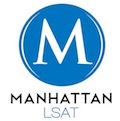LSAT Forum
4 postsPage 1 of 1
-

- erick.traschikoff
-
Thanks Received: 0
-
Vinny Gambini

- Posts: 3
- Joined: July 10th, 2013
Q12
I understand that E) is the answer but I don't know where this statement is being being made to support the answer.
-

- erick.traschikoff
-
Thanks Received: 0
-
Vinny Gambini

- Posts: 3
- Joined: July 10th, 2013
Re: Q12
Just to clarify, the issue here is that the question asks about paintings with religious subjects. The last paragraph where it addresses this never includes religious subjects.
-

- ericha3535
-
Thanks Received: 9
- Forum Guests
- Posts: 59
- Joined: October 11th, 2012
Re: Q12
I did miss this question too so let me write out an explanation!
Let's talk about C and E.
C is hella tricky but it is distorted. You know what would have made this choice right? Try shift were a major influence to were majorly influenced.
Totally supported by line 42.
Now E...
This one requires synthesis and as you have pointed out, this answer choice comes from both p2 and p3.
One thing that you need to note is that despite of fact that p3 does not talk about Venetian artists drawing religious subjects, it describes those artists IN GENERAL.
The key word is general, so what does this mean? This GENERALLY describe Venetian artists.
What does p3 say? that they were better at drawing buildings.
So what could you infer from it to say anything about artists who drew religious subjects? That they are better at drawing buildings than drawing people.
Hope this helps...
Let's talk about C and E.
C is hella tricky but it is distorted. You know what would have made this choice right? Try shift were a major influence to were majorly influenced.
Totally supported by line 42.
Now E...
This one requires synthesis and as you have pointed out, this answer choice comes from both p2 and p3.
One thing that you need to note is that despite of fact that p3 does not talk about Venetian artists drawing religious subjects, it describes those artists IN GENERAL.
The key word is general, so what does this mean? This GENERALLY describe Venetian artists.
What does p3 say? that they were better at drawing buildings.
So what could you infer from it to say anything about artists who drew religious subjects? That they are better at drawing buildings than drawing people.
Hope this helps...
-

- tommywallach
-
Thanks Received: 468
-
Atticus Finch

- Posts: 1041
- Joined: August 11th, 2009
Re: Q12
Hey All,
Looks like the discussion here has already been fruitful, but I'll weigh in with a full discussion of the answer choices.
(A) The passage never says that the Venetians actually apprenticed in Tuscany (though it would be fair to assume that, if they had, it would have improved their drawing skills).
(B) It's actually the Tuscans who painted frescoes that would have been seen from a distance.
(C) This gets the cause and effect wrong. The historical paintings were seen as the model for painting narrative stuff in Venice, not the other way around. (See the last sentence of the second paragraph).
(D) This is tricky. We know that the Venetians didn't make frescoes, but it was because the climate didn't lend itself to the making of frescoes, not because they lacked the skills (they would have developed the skills if the climate had lent itself to frescoes).
(E) This is supported by lines 55-64. We know that "In Venice...this kind of skill [drawing the human form] was acquired and appreciated much later [than 1500, which is the 16th century]" and that there was an "emphasis on architecture" that "local painters obviously prized" because it was seen "as a particular test of the Venetian painter's skill."
Hope that helps!
-t
Looks like the discussion here has already been fruitful, but I'll weigh in with a full discussion of the answer choices.
(A) The passage never says that the Venetians actually apprenticed in Tuscany (though it would be fair to assume that, if they had, it would have improved their drawing skills).
(B) It's actually the Tuscans who painted frescoes that would have been seen from a distance.
(C) This gets the cause and effect wrong. The historical paintings were seen as the model for painting narrative stuff in Venice, not the other way around. (See the last sentence of the second paragraph).
(D) This is tricky. We know that the Venetians didn't make frescoes, but it was because the climate didn't lend itself to the making of frescoes, not because they lacked the skills (they would have developed the skills if the climate had lent itself to frescoes).
(E) This is supported by lines 55-64. We know that "In Venice...this kind of skill [drawing the human form] was acquired and appreciated much later [than 1500, which is the 16th century]" and that there was an "emphasis on architecture" that "local painters obviously prized" because it was seen "as a particular test of the Venetian painter's skill."
Hope that helps!
-t
4 posts Page 1 of 1
